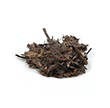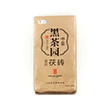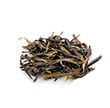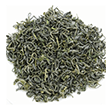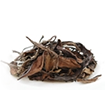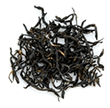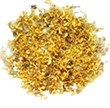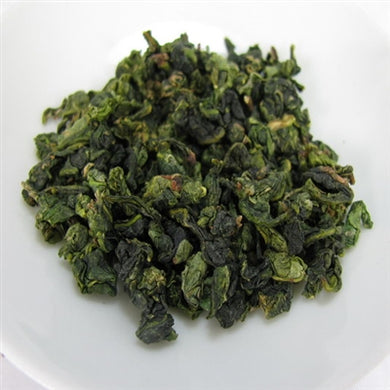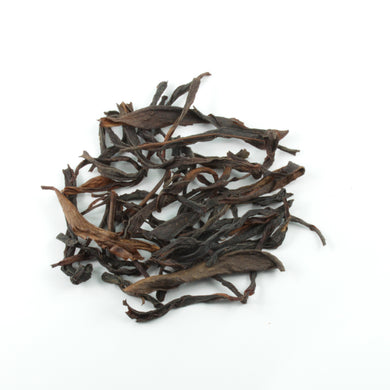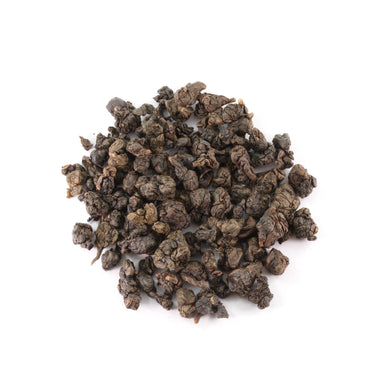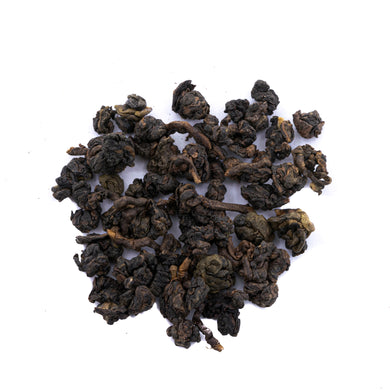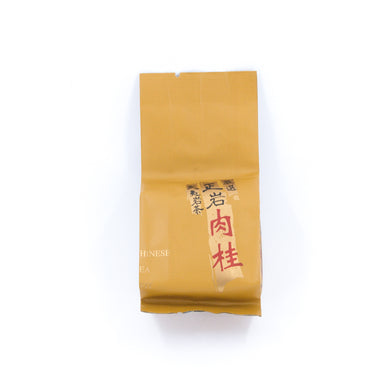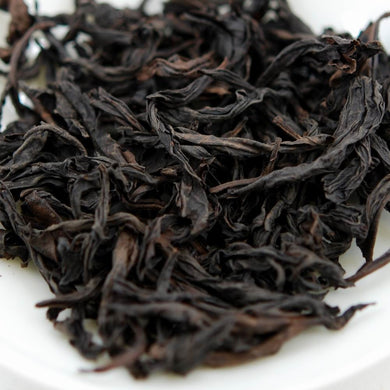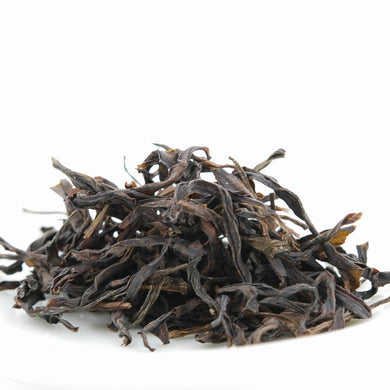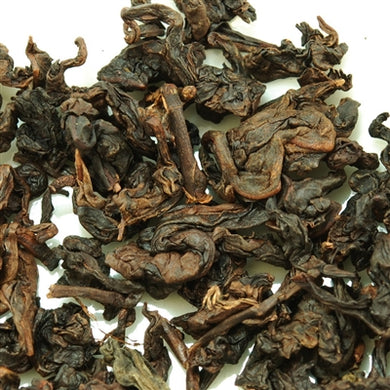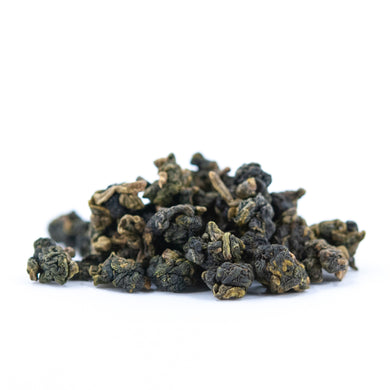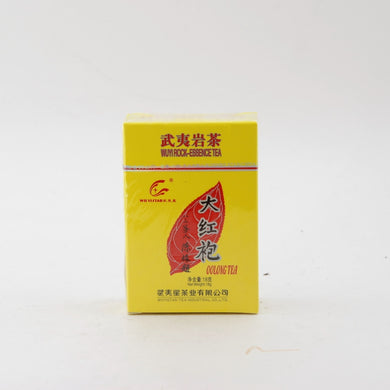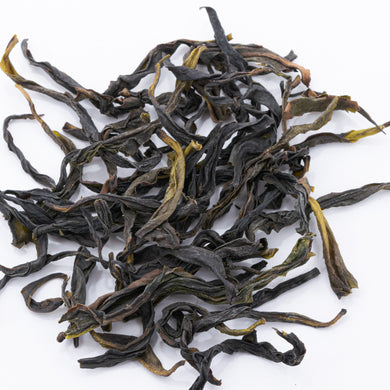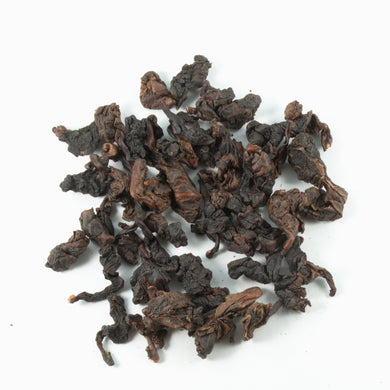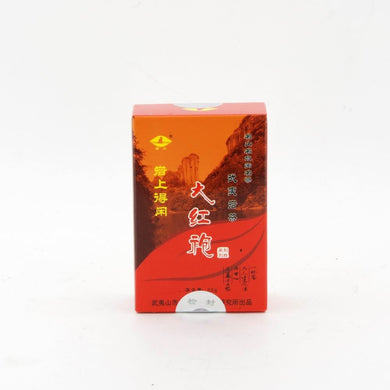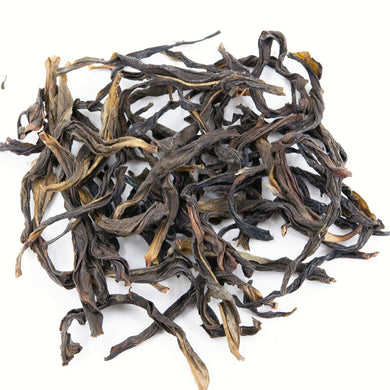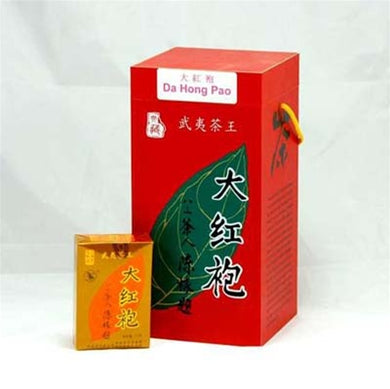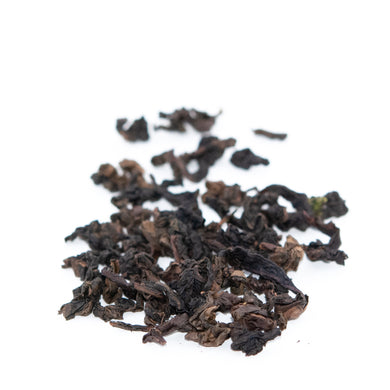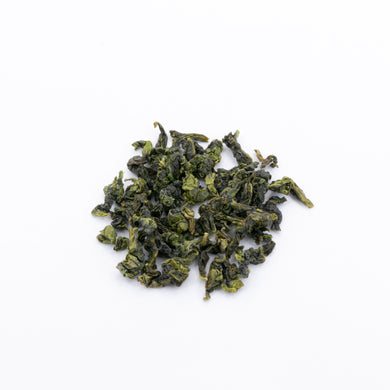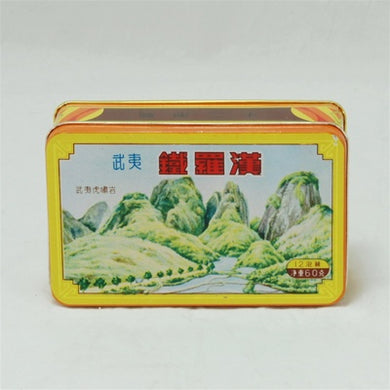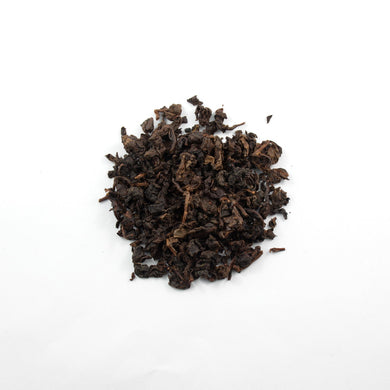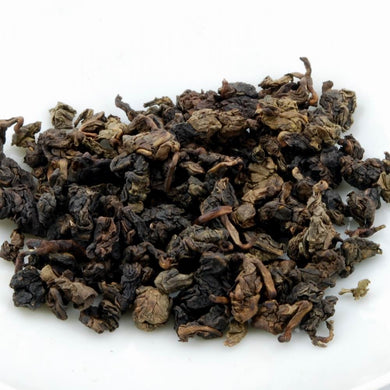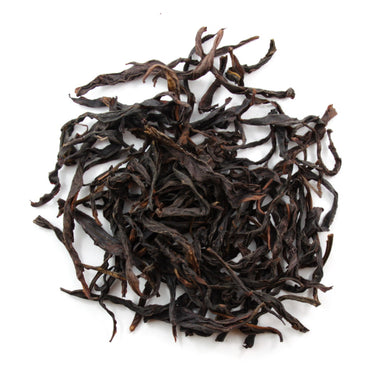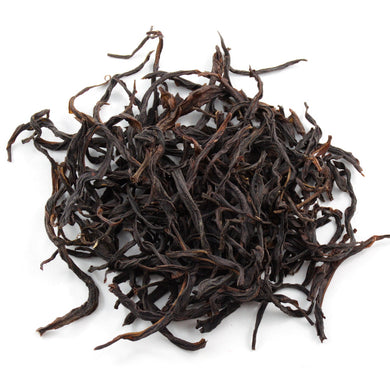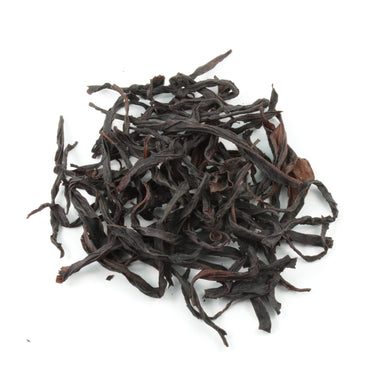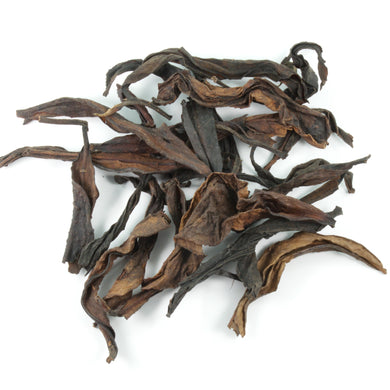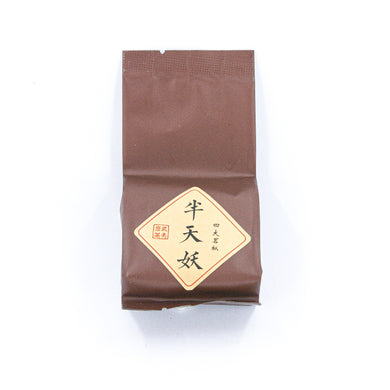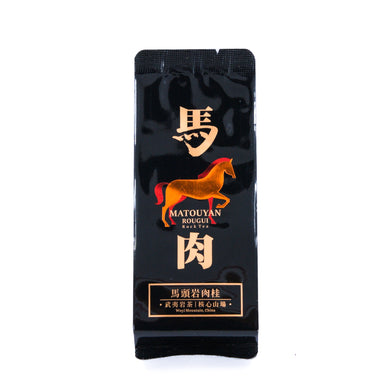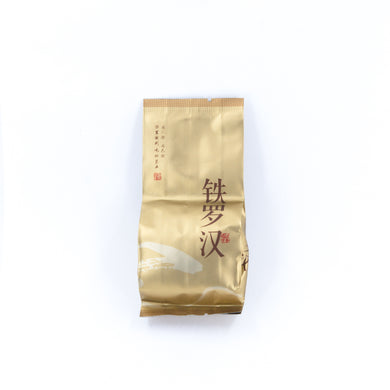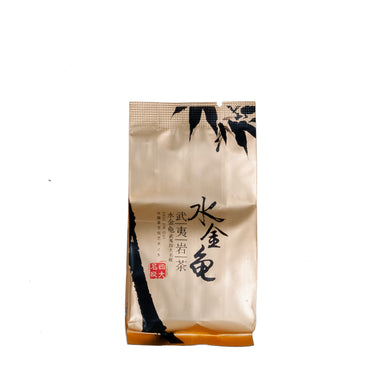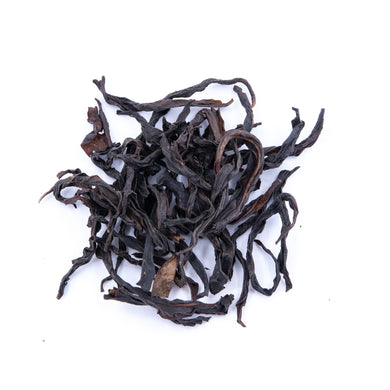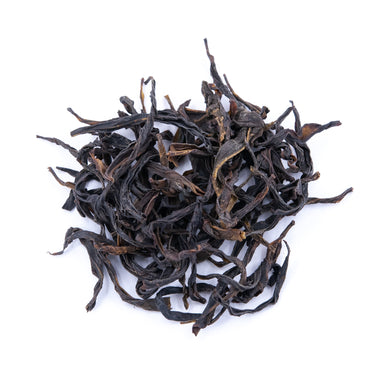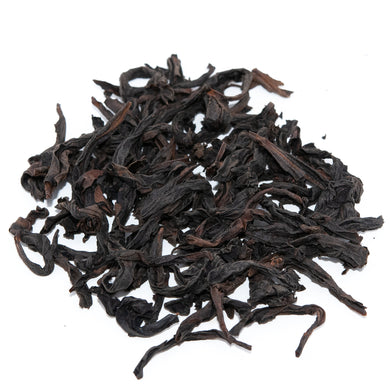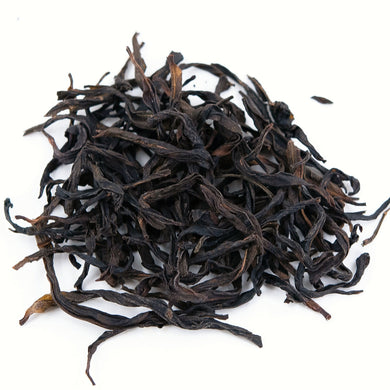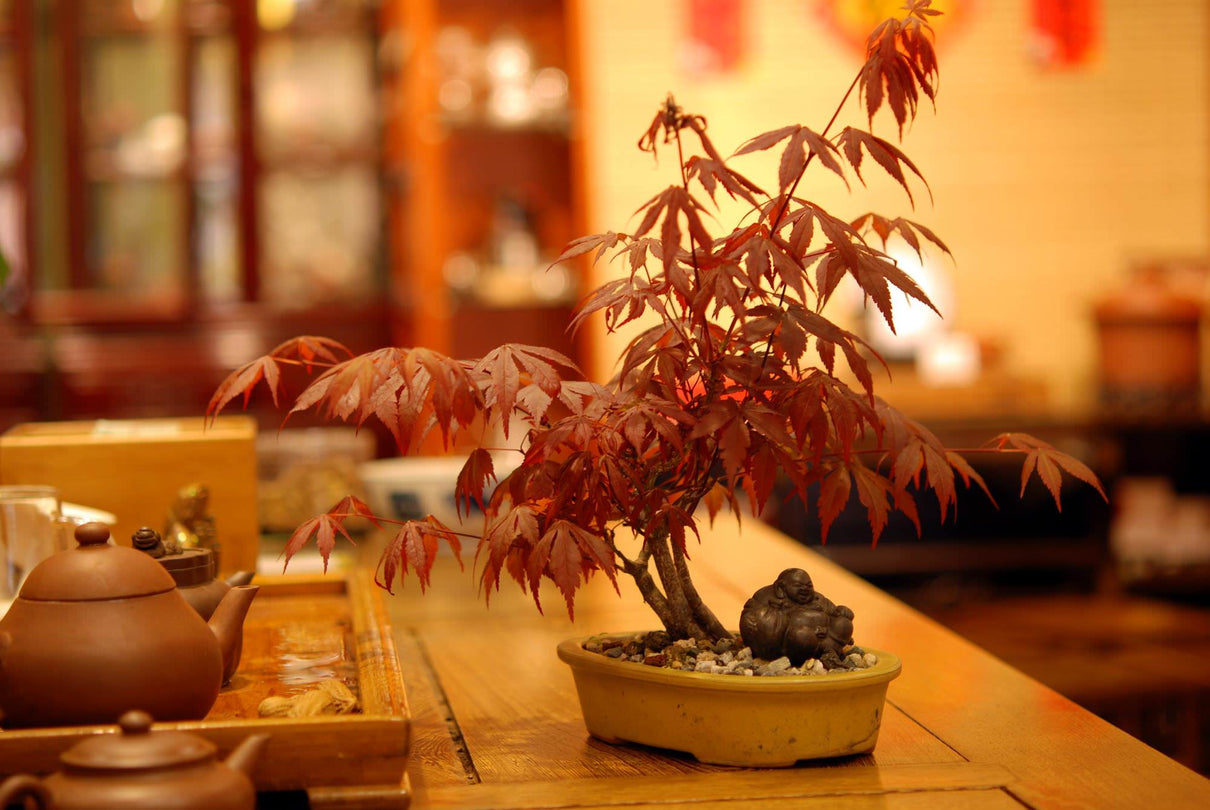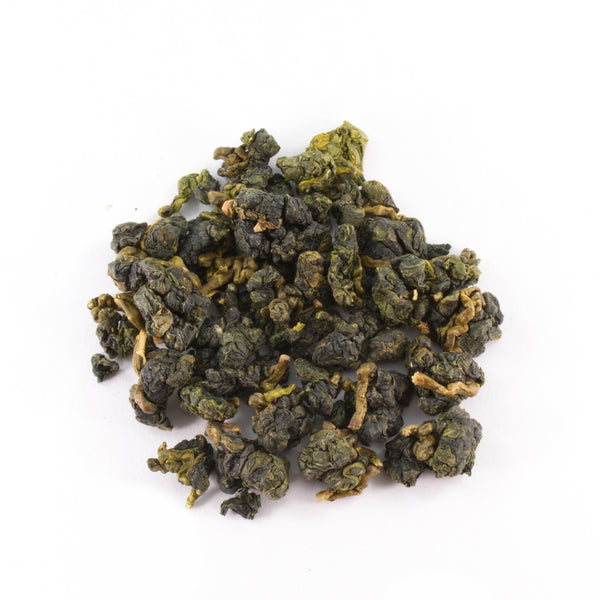
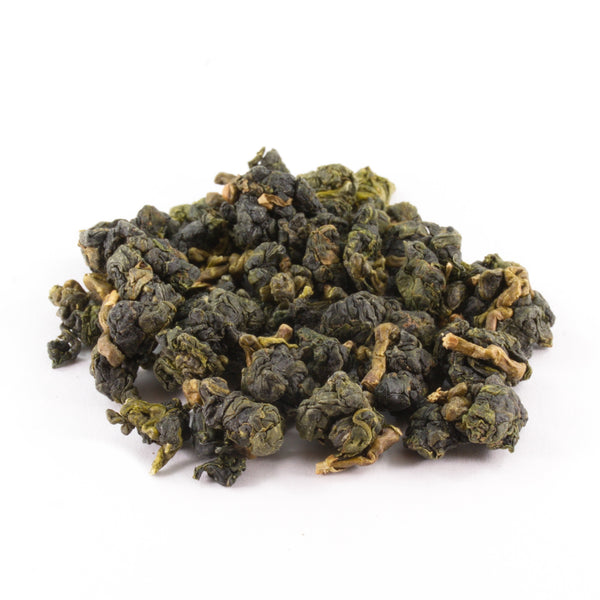
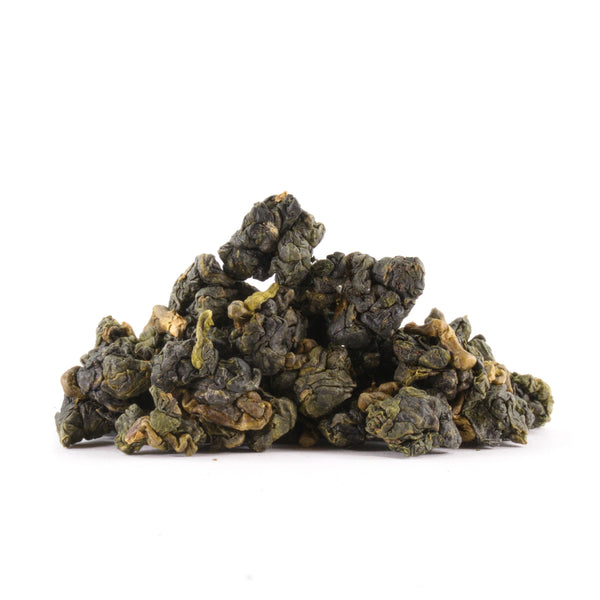
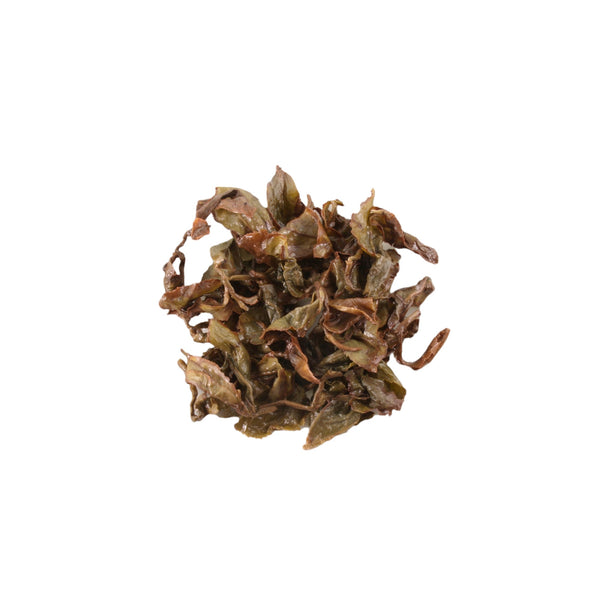
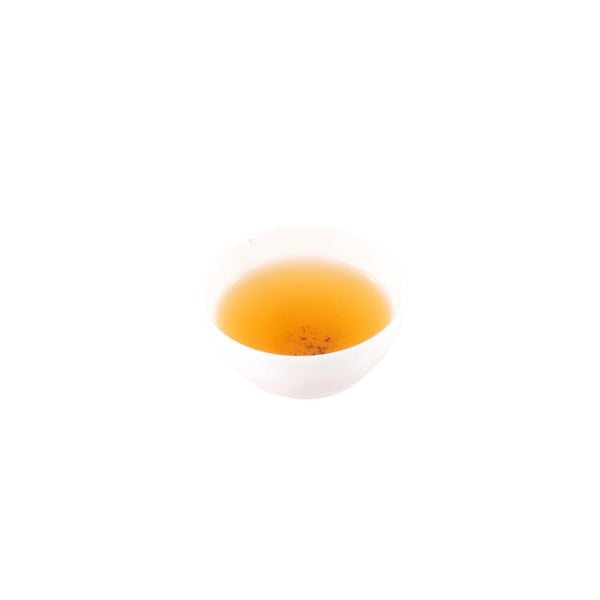
We are very lucky to be offering this premium grade high mountain green oolong from Long Feng Xia area of the Shan Lin Xi region in Taiwan. At an altitude of above 1700 meters, this region is known for its extraordinary growing conditions; with low temperature, short daylight, and covered in fog year-round. This results in slower growth and fewer harvests per year, but the quality of the crop speaks for itself – lusciously thick, mineral-rich, green leaves with a soft cellular structure. The oolong tea produced has its unique flavour that is full and rich, but with no bitterness. We had to place our order ahead the spring harvesting season as the limited crop is highly sought-after by artisanal tea makers and sells out quickly.
This oolong tea is made with the bud and 2 leaves, hand-rolled into tight balls and fermented at around 30%. Brewed at a low temperature, the tea is beautifully gentle, rich and aromatic all at the same time. The low fermentation retains vibrant, botanic elements and adds floral notes – a mixture of bamboo and fresh orchids, with a touch of creaminess. The tea liquid is thick and gives an incredible mouthfeel; it’s abundantly flowery, smooth and elegant, while packed with umami with its vegetal creamy taste. The tea is still flavourful after many infusions, and the aftertaste lingers long after the session.
The Quick Way - 5 Easy Steps
Step 1
Rinse a teapot, small teacups and a small pitcher with hot water.
Step 2
Put one tablespoon of tea leaves in the teapot for every two people being served. Use more for large leaf tea or for a stronger taste.
Step 3
Place the tea leaves inside the teapot and pour in enough hot water to cover the leaves. Pour out the water immediately to rinse the leaves. Use to this chart for proper water temperatures.
|
Green Tea Silver Needle White Teas and most tea made from “tips” |
75C – 80C |
|
Taiwan Oolong Tips Red/Black Teas |
90C – 95C |
|
Black Teas Pu-Erh (Bow-Lay) Te Guan Yin (Iron Buddha) Da Hong Pao (Cliff Tea) Lapsang Souchong Phoenix Oolong Aged White Teas |
95C – boiling |
IMPORTANT NOTES:
- Too much or too little heat for the tea you are making will break down the leaves too quickly or too slowly and the flavour will be inconsistent. Temperatures can be approximate.
- *Boiling means when the water has just reached a slow boil with big bubbles. The Chinese call this “Fish-Eye Water”. For green tea, watch for small streams of tiny bubbles starting to rise from the bottom of the kettle. This is called “Crab-Eye Water”.
- For Oolong teas, the correct temperature is somewhere between these two. If you do not have a thermometer, let the water stand for 2 minutes or so after reaching a first boil to get 90 – 95C C / 194 – 203 F.
Step 4
Empty the teacups and pitcher. Pour enough hot water into the teapot again to cover the leaves. Wait 8 - 10 seconds and pour the tea into the pitcher and serve, a little longer for a stronger taste. For additional brews, repeat Step 4, deducting two seconds for the second brew and adding two seconds for each additional brew.
Step 5
As the aromatic compounds in the tea leaves dissolve in the water, you will notice the subtle flavours of the tea begin to change with each brew. You will be amazed at the difference! To make tea taste even better, try making tea using Gong Fu Cha method, the traditional Chinese art of tea-making.
The Traditional Way Using The Gong Fu Cha Method
You will need:
- Teapot - preferably a small Chinese Yixing teapot. These have the best heat handling properties for tea-making, as well as for developing the flavour. If you only have a large teapot, use the quantities of water as if a small teapot and tea shown on the charts.
- Small teacups (similar in size to Japanese sake cups) or tiny bowls
- Kettle
- Pitcher - small glass or porcelain
- Fine Strainer - to keep your tea clear and free of sediment
- Tea Tray - A cookie sheet or large flat dish lined with a towel can make a good tray to prepare your tea on.
Step 1 - Warm The Teapot and Pitcher, Sterilize The Teacups and Strainer
The first step is to use the right size of teapot for the number of people you are serving. Most teas taste best when made using a Yixing unglazed clay teapot. Use this chart for the correct size of teapot for the number of people you are serving (use this amount of water if you are using a larger teapot). Pour some hot water into the teapot, pitcher, teacups and over the strainer to rinse, warm and sterilize them.
|
Size of Teapot |
Volume (ml / fl oz) |
Number of People Served |
|
#1 size |
70 / 2.4 |
1 - 2 |
|
#2 |
100 / 3.4 |
2 - 4 |
|
#3 |
175 / 6.0 |
3 - 5 |
|
# 4 |
225 / 7.6 |
4- 6 |
Referring to this chart, determine the correct water temperature for the type of tea you are making. Too much or too little heat will break down the leaves too quickly or too slowly and the flavour will be inconsistent. Temperatures can be approximate.
|
Green Tea Silver Needle White Teas and most tea made from “tips” |
75C – 80C
|
|
Taiwan Oolong Tips Red/Black Teas |
90C – 95C |
|
Black Teas Pu-Erh (Bow-Lay) Te Guan Yin ( Iron Buddha) Da Hong Pao (Cliff Tea) Lapsang Souchong Phoenix Oolong Aged White Teas
|
95C – boiling |
* Boiling means when the water has just reached a slow boil with big bubbles . The Chinese call this “Fish-Eye Water”. For green tea, watch for small streams of tiny bubbles starting to rise from the bottom of the kettle. This is called “Crab-Eye Water”.
For Oolong teas, the correct temperature is somewhere between these two. If you do not have a thermometer, let the water stand for 2 minutes or so after reaching a first boil to get 90 – 97C C / 194 – 206 F.
Step 2 – Rinse The Tea Laves
Empty the teapot and pitcher of the warming water. Place the measured amount of tea into the teapot using this chart and fill with the proper temperature water from the chart above. When pouring water in, allow the water to overflow the top of the teapot until the bubbles disappear and the water runs clear.
|
Size |
Size of Leaves |
|||
|
Rolled Leaves |
Less than 1 cm / 3/8 inches |
1 – 2 cm |
2 - 4 cm |
|
|
#1 size |
0.5 - 1 |
0.5 - 1 |
1 – 1.5 |
1.5– 2 |
|
#2 |
1.5 - 2 |
1.5 - 2 |
2 – 2.5 |
2.5 – 3 |
|
#3 |
3 – 3.5 |
3 – 3.5 |
3.5 – 4 |
4 – 4.5 |
|
# 4 |
4 – 4.5 |
4 – 4.5 |
4.5 – 5 |
5 – 5.5 |
This chart shows the amount of tea to use (in number of tablespoons) based on the size of the tea leaves you are using and the size of teapot. Adjust for personal taste.
Replace the lid and immediately pour off all the water (or a bit longer if using compressed tea) and shake out the last drops. Then tilt the lid slightly open on the teapot. This allows the heat in the teapot to escape and not “cook” the leaves so they can retain their aroma
Step 3 –The First Brew
Fill the teapot until the water flows over the top. Place the lid on the teapot and count the proper number of seconds using this chart. Adjust times to taste.
|
|
Rolled Leaves |
Less than 1 cm / 3/8 inches |
1 – 2 cm |
2 - 4 cm |
|
Rinse the leaves |
4 - 8 seconds |
pour off the tea as quickly as possible |
1- 3 seconds |
2 - 4 seconds |
|
First Brew |
10– 15 seconds |
1 – 2 seconds |
9– 12 seconds |
12 – 15 seconds |
|
Second Brew |
8– 13 seconds |
2– 4 seconds |
8– 10 seconds |
10– 13 seconds |
|
Third Brew |
6– 10 seconds |
4– 6 seconds |
6–8 seconds |
8– 10 seconds |
|
Fourth Brew |
4– 10 seconds |
4– 6 seconds |
6– 8 seconds |
8– 10 seconds |
|
Fifth Brew |
6– 12 seconds |
8– 8 seconds |
8– 10 seconds |
10– 12 seconds |
If you have a tea tray, slowly pour a little hot water over the teapot for a few seconds while counting. At the end of the count, pour the tea into the pitcher and tilt the lid open on the teapot. Empty the teacups of the warming water and serve the tea.
Step 4 – Additional Brews
For the second brew, repeat Step 3 until there is no more flavour from the leaves. High quality tea will make many good tasting brews. The taste of low quality tea will start to fade after only a few brews. Believe it or not, high quality tea is usually less expensive to use in the long run than low quality tea, it tastes better and lasts longer!
If the leaves still have some flavour remaining when you finish, you can keep them in the teapot with the lid closed for up to 12 hours. When you're ready to make more tea, just pick up the timing for the next brew where you left off, less a few seconds.
Congratulations!
Congratulations, you are now ready to move on to a more advanced level of tea-making. For full instructions about Gong Fu Cha, see Gong Fu Cha - The Complete Guide To Making Chinese Tea by Daniel Lui)



